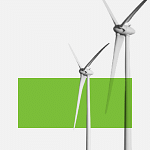EMA unveils two-tier emission standards for Singapore’s new power-generation units

NEW and repowered fossil fuel-fired power-generation units will have to meet emission standards under a new two-tier system.
The Energy Market Authority has said it would consult the industry on the new Code of Practice to enforce the emission standards from 2024.
Having the new standards would facilitate the deployment of clean and efficient power-generation units in Singapore, said EMA on Thursday (Oct 26), in an announcement following an industry consultation exercise held in the first two months of this year.
Emission standards will be enforced at the unit-level on all new and repowered fossil fuel-fired generation units for which the application for a licence to operate was submitted on or after Jan 9, 2023.
Repowered units are existing generation units which have undergone major replacement works, such as the replacement or addition of new gas or steam turbines.
Under the new Tier 1 emission standard, new and repowered generation units expected to be run regularly will have to keep within an emission intensity unit of 0.355 tonnes of carbon dioxide equivalent per megawatt hour of net electrical output.
A NEWSLETTER FOR YOU

ESG Insights
An exclusive weekly report on the latest environmental, social and governance issues.
By default, all new and repowered fossil fuel-fired plants will have to meet this emission standard, which demands about 10 per cent more carbon-efficiency than existing generation units in Singapore, EMA said.
Generation units that are expected to run only periodically can opt to come under the Tier 2 standard, which requires that they stay below a yearly emission cap.
EMA will also require both Tier 1 and Tier 2 units to be at least 30 per cent hydrogen-ready by volume. They must also enable retrofitting to make them 100 per cent hydrogen-ready in future, it said.
“This will ensure that Singapore’s new power generation units can further reduce their emissions when hydrogen becomes more commercially viable,” the agency added.
Singapore’s power sector now contributes to about 40 per cent of the island’s total carbon emissions, with 95 per cent of electricity here generated from natural gas.
Under the government’s National Hydrogen Strategy, the plan is for hydrogen to meet up to half of Singapore’s projected demand for electricity by 2050, if the technology continues to advance and international efforts remain strong. Low-carbon hydrogen is regarded as a sustainable alternative to fossil fuels and a major pathway to address climate change.
Exemptions from the new emission standards will apply to some generation units, such as those in waste-to-energy incineration plants and standby generators installed solely as power backups in buildings.
EMA said that it would “continue to review and gradually tighten the emission standards over time to ensure that the power sector is on track to facilitate the transition to net-zero emissions by 2050”.
KEYWORDS IN THIS ARTICLE
BT is now on Telegram!
For daily updates on weekdays and specially selected content for the weekend. Subscribe to t.me/BizTimes
Singapore
Singapore and Canada to enhance science and technology cooperation
Daily Debrief: What Happened Today (May 2)
US-China competition not the most worrying, lack of communication is: Gan Kim Yong
Chee Hong Tat to join MAS board of directors
Singapore keen on ‘talent exchange’, developing AI ‘guard rails’ with the US
Social cohesion, long-term planning, political stability are imperatives for Singapore: PM Lee
